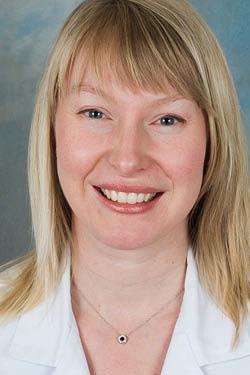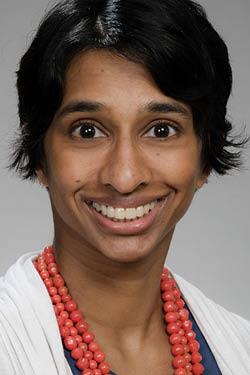Two physicians will conduct one of the first studies in more than 20 years on present-day parental leave across medical specialties in graduate medical education (GME). They were awarded the Joan F. Giambalvo Fund for the Advancement of Women grant for their work, announced Wednesday in conjunction with Women in Medicine Month.
The AMA Women Physicians Section (WPS) hosts Women in Medicine Month each September to acknowledge pioneering women, celebrate their accomplishments and help cultivate future women physicians. The Joan F. Giambalvo Fund for the Advancement of Women was established by the AMA-WPS and the AMA Foundation to offer funding specifically for health care researchers to identify and address the issues that affect women physicians and medical students.
The winners of this year’s award are Shobha W. Stack, MD, PhD, and Jennifer Best, MD, acting instructor and associate professor, respectively, in the Department of Medicine at the University of Washington. They are the principal investigators for the research project, “Childbearing among physicians in training: A cross-sectional survey of trends and factors.”
Investigating the factors that influence parental leave
About 40 percent of physician trainees plan to have a child during their GME training, a study in the July issue of Academic Medicine found. Drs. Stack and Best have dug into a more focused aspect of family building in their research.
Leading up to their study, Drs. Stack and Best found that, in 1983, 50 percent of children born to women physicians were born during residency training. A 1993 survey showed that the average trainee maternity leave was less than eight weeks. Yet, there was no concurrent assessment of the consequences of leave to the residents or the training programs.
“The primary aims of our study are to characterize parental leave practices across specialties, determine the factors that influence its length and assess the effect of parental leave on trainee well-being and the training environment,” Dr. Stack said.
“I have been deeply interested in the issues that women face in medical training since undergoing my own postgraduate years as a new mother,” Dr. Stack said. “With the help of the Giambalvo research grant, we will conduct the first study in more than 20 years specifically addressing present-day parental leave across medical specialties in graduate medical education.”
“We are very grateful to the AMA’s Women Physicians Section for granting us the joint Giambalvo award, but more importantly for prioritizing this research that we hope will create a more sustainable environment for women in medicine,” Dr. Best said.
The state of women in medicine is changing. In 2010, women accounted for more than half of the population—meaning female patients are the majority–yet women are still underrepresented in medicine, making up one-third of the physician workforce. But now almost one-half of students and residents are women.Learn more about how the AMA aims to increase the number and influence of women physicians in leadership roles through the AMA Women Physicians Section.





